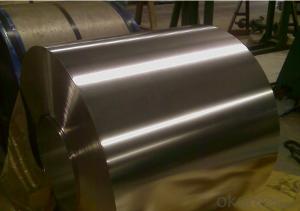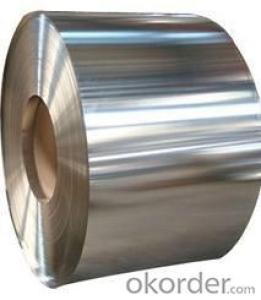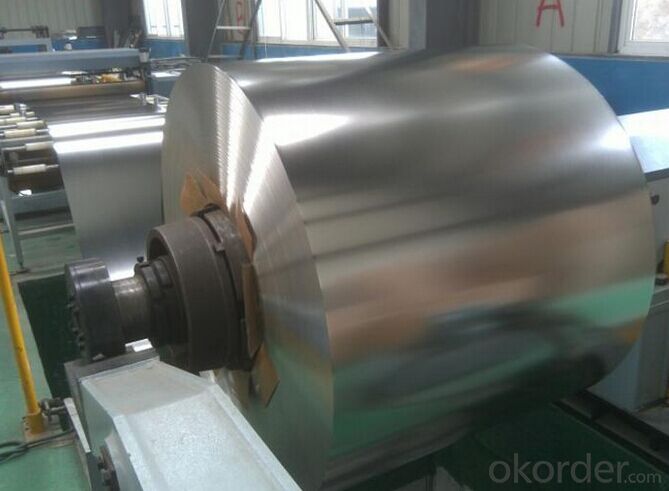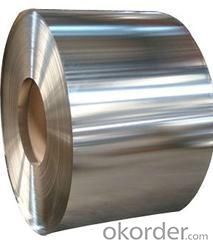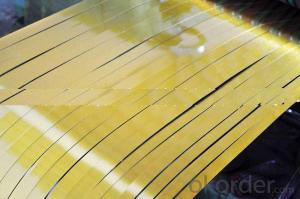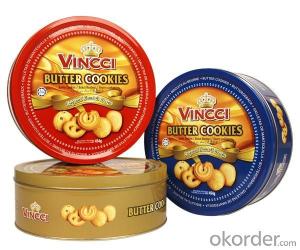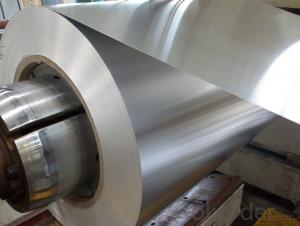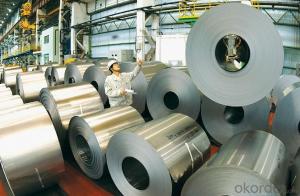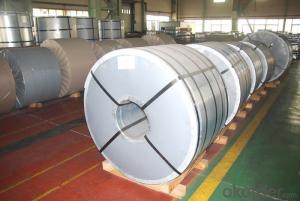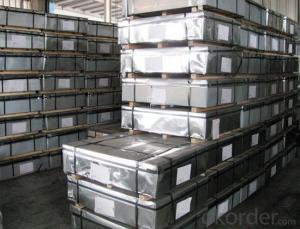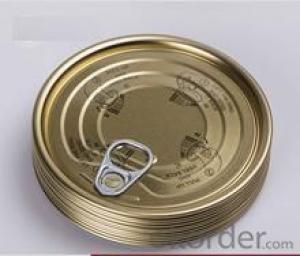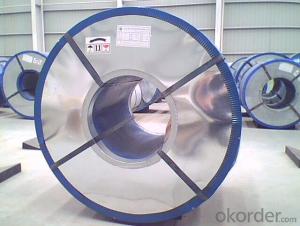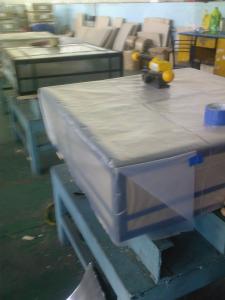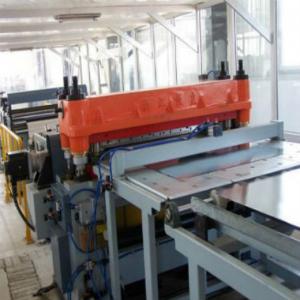Tinplate Coils and Steets for Tin Cans Making
- Loading Port:
- Tianjin
- Payment Terms:
- TT OR LC
- Min Order Qty:
- 25 m.t
- Supply Capability:
- 7000 m.t/month
OKorder Service Pledge
OKorder Financial Service
You Might Also Like
1.Structure of Electrolytic Tin Plate Coils and Sheets for Foods Metal Packaging Description
Electrolytic Tin Plate Coils and Sheets for Foods Metal Packaging, is one thin steel sheet with a coating of tin applied by electrolytic deposition. Tinplate made by this process is essentially a sandwich in which the central core is strip steel. This core is cleaned in a pickling solution and then fed through tanks containing electrolyte, where tin is deposited on both sides. As the strip passes between high-frequency electric induction coils, it is heated so that the tin coating melts and flows to form a lustrous coat.
2.Main Features of the Electrolytic Tin Plate Coils and Sheets for Foods Metal Packaging
Appearance – Electrolytic Tin Plate is characterized by its beautiful metallic luster. Products with various kinds of surface roughness are produced by selecting the surface finish of the substrate steel sheet.
Paintability and printability – Electrolytic Tin Plates have excellent paintability and printability. Printing is beautifully finished using various lacquers and inks.
Formability and strength – Electrolytic Tin Plates have got very good formability and strength. By selecting a proper temper grade, appropriate formability is obtained for different applications as well as the required strength after forming.
Corrosion resistance – Tinplate has got good corrosion resistance. By selecting a proper coating weight, appropriate corrosion resistance is obtained against container contents. Coated items should meet 24 hour 5 % salt spray requirement.
Solderability and weldability – Electrolytic Tin Plates can be joined both by soldering or welding. These properties of tinplate are used for making various types of cans.
Hygienic – Tin coating provides good and non toxic barrier properties to protect food products from impurities, bacteria, moisture, light and odours.
Safe – Tinplate being low weight and high strength makes food cans easy to ship and transport.
Eco friendly – Tinplate offers 100 % recyclability.
Tin is not good for low temperature applications since it changes structure and loses adhesion when exposed to temperatures below – 40 deg C.
3.Electrolytic Tin Plate Coils and Sheets for Foods Metal Packaging Images
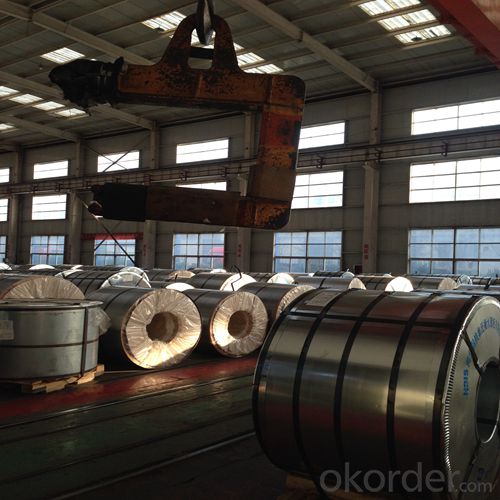
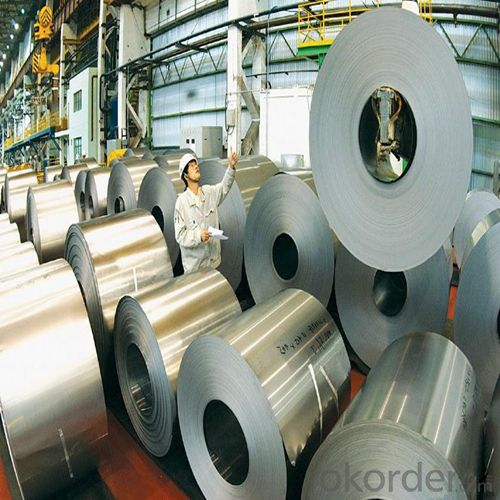
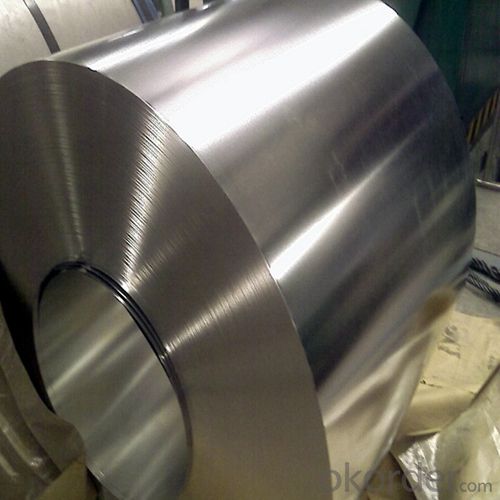
4.Electrolytic Tin Plate Coils and Sheets for Foods Metal Packaging Specification
Standard | ISO 11949 -1995, GB/T2520-2000,JIS G3303,ASTM A623, BS EN 10202
|
Material | MR,SPCC |
Thickness | 0.15mm - 0.50mm |
Width | 600mm -1150mm |
Temper | T1-T5 |
Annealing | BA & CA |
Coil Inner Diameter | 508mm |
Weight | 6-10 tons/coil 1~1.7 tons/sheets bundle |
Passivation | 311 |
Oil | DOS |
Surface | Finish,bright,stone,matte,silver |
5.FAQ of Electrolytic Tin Plate Coils and Sheets for Foods Metal Packaging
-What your tinplate material is used for ?
Tinplate is widely used for the packaging of products. Such as food cans,
beverage cans, pet cans, closures, general line cans and so on.
Printed Tinplate is offered!!
-How to place .an order or contact you ?
Please send us Email. we will give you a quick response in seconds .
- How is your quality ?
All our quality is prime even the secondary quality . We have many years experience
In this field with serious quality control standard . Advanced equipment, We welcome your visit to our factory .
- Q: How does tinplate contribute to the conductivity of electrical components?
- Tinplate contributes to the conductivity of electrical components by acting as a protective coating, preventing corrosion and oxidation of the underlying metal. This ensures a consistent flow of electrical current and enhances the overall conductivity of the component.
- Q: What are the hygiene benefits of tinplate packaging?
- Tinplate packaging offers several hygiene benefits due to its properties. Firstly, tinplate is non-toxic and does not react with food or beverages, ensuring that the contents remain safe and unaffected. Secondly, the airtight and hermetic seal provided by tinplate packaging prevents the entry of bacteria, moisture, and other contaminants, thus preserving the quality and freshness of the product. Additionally, tinplate's resistance to corrosion and rusting minimizes the risk of contamination from external factors, enhancing the overall hygiene and safety of the packaged goods.
- Q: Can tinplate be used for packaging household products?
- Yes, tinplate can be used for packaging household products. Tinplate is a versatile material that offers durability, corrosion resistance, and airtight packaging. It is commonly used for packaging food, beverages, cosmetics, and various other household products.
- Q: What are the safety regulations for tinplate packaging?
- The safety regulations for tinplate packaging are designed to ensure that the packaging material is safe for storing and transporting various products. These regulations typically cover aspects such as the composition of the tinplate, its resistance to corrosion, and any potential hazards associated with its use. Additionally, regulations may also address labeling requirements to provide consumers with information about the contents and potential risks of the packaged products. Compliance with these regulations is crucial to guarantee the safety and integrity of the packaged goods.
- Q: How does tinplate perform in terms of corrosion resistance compared to other materials?
- Tinplate performs exceptionally well in terms of corrosion resistance compared to other materials. Its unique composition of steel coated with a thin layer of tin provides a protective barrier against moisture and oxidation, preventing rust and corrosion. This makes tinplate highly suitable for various applications, especially in the packaging industry, where it ensures the preservation and longevity of products.
- Q: How is tinplate affected by different types of beverages?
- Tinplate is generally resistant to most types of beverages, including acidic ones. However, certain highly acidic or corrosive beverages, such as fruit juices, can cause a chemical reaction with the tin coating, potentially leading to a metallic taste or discoloration. To prevent this, tinplate cans are often lined with a protective coating, such as lacquer or polymer, to ensure the beverage's quality and safety.
- Q: What are the advantages of using tinplate for automotive parts?
- Tinplate offers several advantages for automotive parts. Firstly, it provides excellent corrosion resistance, ensuring durability and long-lasting performance even in harsh environments. Secondly, it offers high strength and rigidity, making it suitable for various automotive applications that require structural integrity. Additionally, tinplate is lightweight, contributing to fuel efficiency and reducing the overall weight of the vehicle. Lastly, it allows for easy shaping and forming, enabling complex designs and customization options for automotive components.
- Q: Can tinplate be used for packaging of organic products?
- Yes, tinplate can be used for packaging of organic products. Tinplate is a type of steel coated with a thin layer of tin, which provides a protective barrier against corrosion and ensures the product's freshness and safety. It is a durable and sustainable material that is commonly used in the food industry, including for packaging organic products. Additionally, tinplate is recyclable, making it an environmentally friendly choice for organic packaging.
- Q: How is tinplate coated with anti-tarnish materials?
- Tinplate is coated with anti-tarnish materials through a process called passivation. This involves applying a thin layer of protective coating onto the tinplate surface to prevent oxidation and tarnishing. The coating can be made from various materials such as organic compounds or inorganic substances like chrome or zinc, which create a barrier against moisture and other corrosive elements. This helps to maintain the aesthetic appeal and durability of the tinplate over time.
- Q: What are the main challenges in tinplate storage and transportation?
- The main challenges in tinplate storage and transportation include ensuring proper protection against rust and corrosion, maintaining temperature control to prevent damage to the tinplate, preventing stacking or handling errors that may result in dents or scratches, and ensuring efficient logistics to minimize delays and damage during transportation. Additionally, complying with safety regulations and maintaining adequate inventory management are also significant challenges in tinplate storage and transportation.
Send your message to us
Tinplate Coils and Steets for Tin Cans Making
- Loading Port:
- Tianjin
- Payment Terms:
- TT OR LC
- Min Order Qty:
- 25 m.t
- Supply Capability:
- 7000 m.t/month
OKorder Service Pledge
OKorder Financial Service
Similar products
Hot products
Hot Searches
Related keywords
